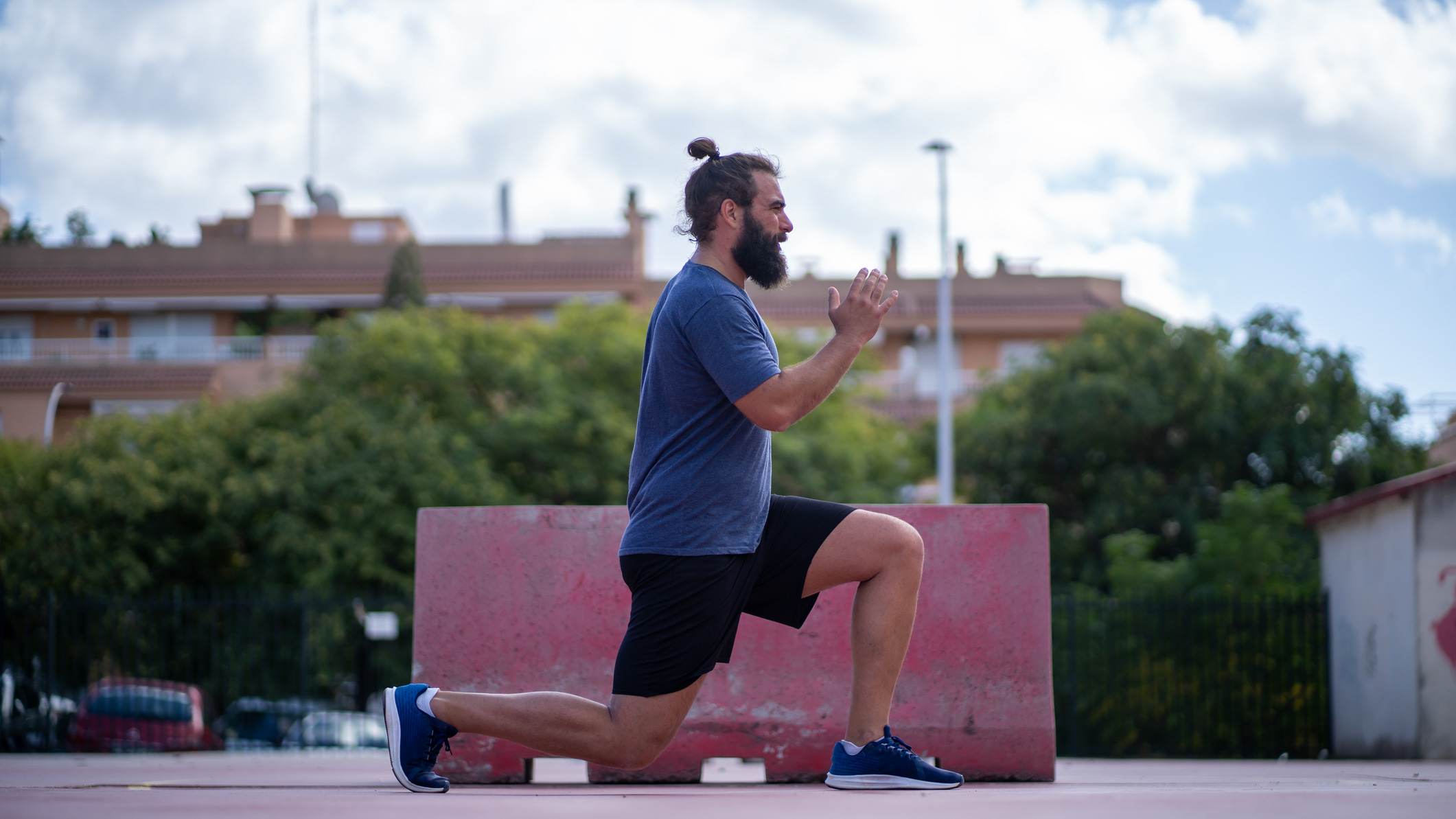Want stronger legs but don't have any equipment? Try this trainer's fast-paced, four-minute workout
Boost your metabolism and strengthen your legs with this fiery bodyweight exercise


Squats are a leg workout staple, particularly if you’re exercising at home. But if you’ve been doing them for a while, there will inevitably come a point where they start to feel too easy.
So what do you do if you want to keep challenging your muscles? Increasing the weight you’re lifting is one option, but if you don’t have weights at home you could swap your next set of squats for a more difficult variation.
Top fitness coach and iFit trainer Hannah Eden recommends the gorilla squat—a sequence of a squat jump and a jumping lunge on each leg, designed to build power and endurance in your lower-body muscles.
Watch her video below to find out how to do it. Then try doing the exercise following a Tabata format, performing the move for 20 seconds and then resting for 10 seconds. Do this eight times to complete a full four-minute routine.
How to do the gorilla squat
The first gym Eden owned had minimal equipment, so she and her team became specialists at challenging their clients without weights. Many of the exercises they used were inspired by animal flow, which is a type of training that incorporates animalistic movements like the beast push-up. These work your joints through a wide range of motion and challenge you to move in new ways.
"It’s a great way of improving your bodyweight to strength ratio," Eden tells me.
Each repetition of Eden's gorilla squat consists of three movements; a squat jump and a jumping lunge on each leg. These are all multi-muscle compound exercises, recruiting the quadriceps on the front of your thigh, hamstrings on the back of your thigh, glutes or backside muscles, and the calves on the back of your lower leg.
Get the Fit&Well Newsletter
Start your week with achievable workout ideas, health tips and wellbeing advice in your inbox.
Using these large muscle groups requires a lot of energy energy. As a result, this move will increase your heart rate and challenge your cardio fitness, while also elevating calorie burn and boosting your metabolism.
The exercise also incorporates a plyometric element by adding a jump at the top of each move. Plyometric exercises are those that challenge you to produce force, fast, and doing them can improve your speed and power—attributes that translate to any number of other sports. This type of training can help you maintain the mobility and agility you need to do basic things in later life, too, like standing up from a chair and climbing the stairs.
Need some sneakers to support your varied training routine? Our guide to the best cross training shoes can help

Harry Bullmore is a Fitness Writer for Fit&Well and its sister site Coach, covering accessible home workouts, strength training session, and yoga routines. He joined the team from Hearst, where he reviewed products for Men's Health, Women's Health, and Runner's World. He is passionate about the physical and mental benefits of exercise, and splits his time between weightlifting, CrossFit, and gymnastics, which he does to build strength, boost his wellbeing, and have fun.
Harry is a NCTJ-qualified journalist, and has written for Vice, Learning Disability Today, and The Argus, where he was a crime, politics, and sports reporter for several UK regional and national newspapers.